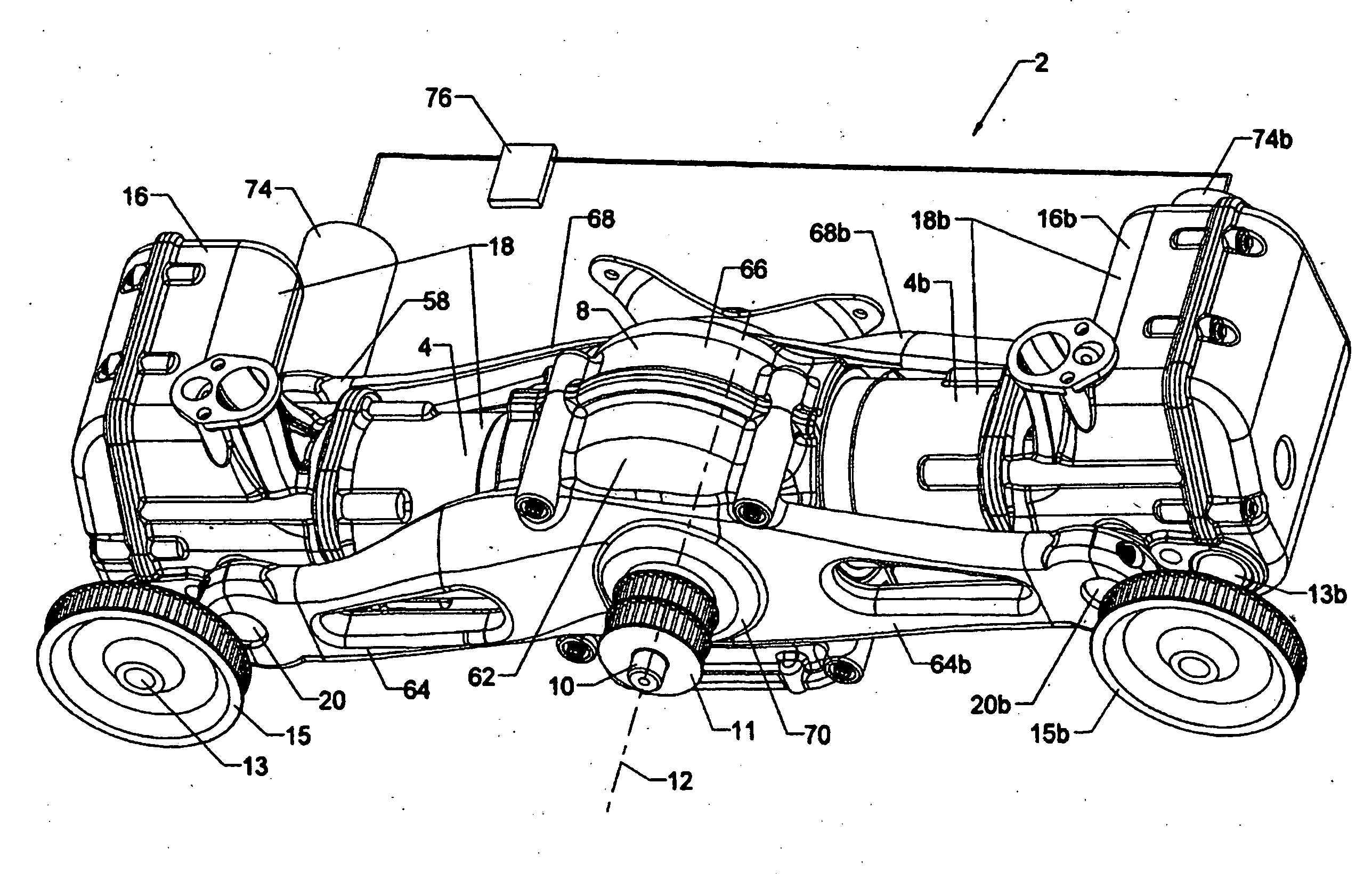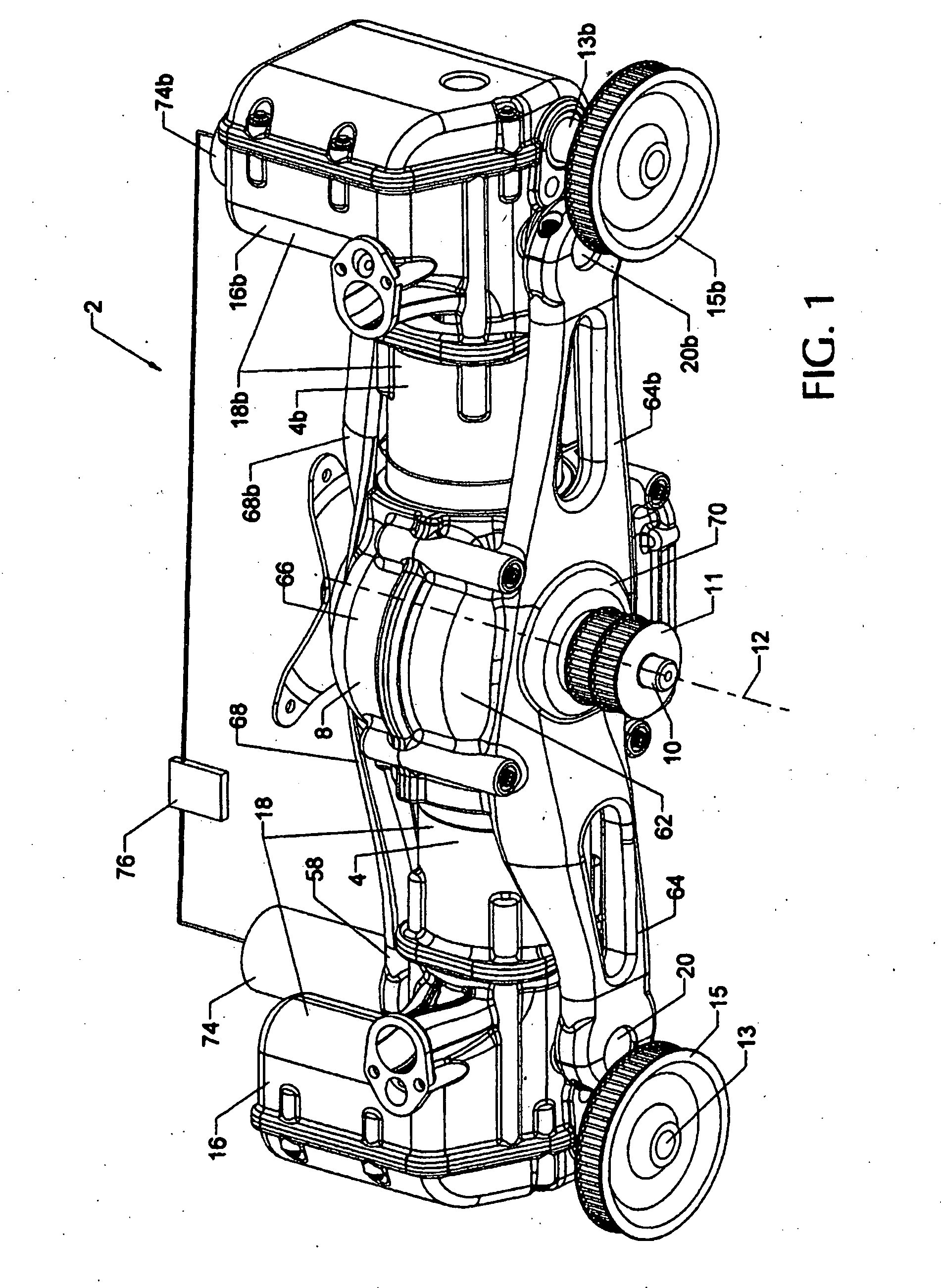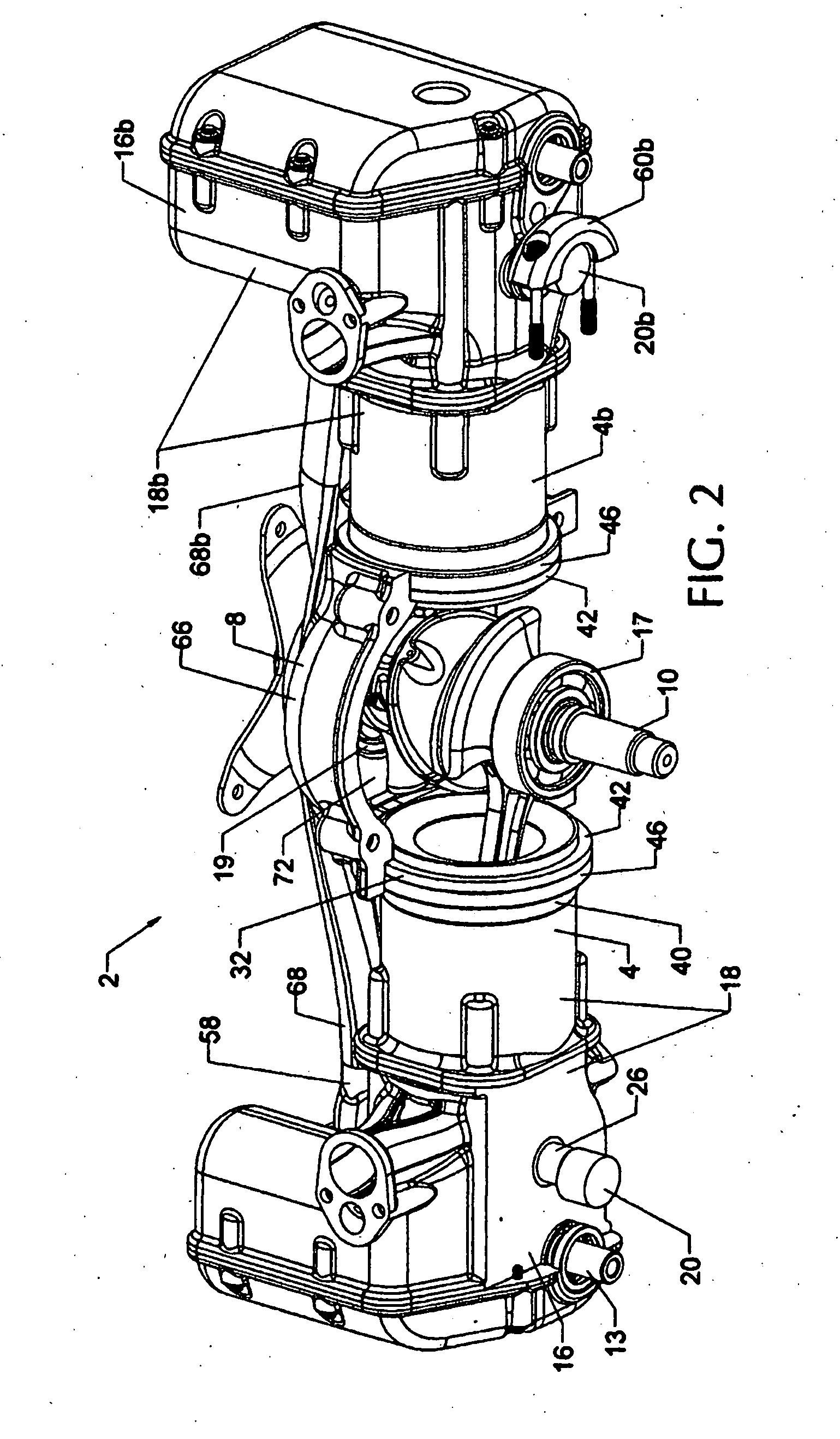Variable compression ratio engine
a compression ratio and variable technology, applied in the direction of engines, machines/engines, mechanical equipment, etc., can solve the problems of inability to achieve tight machining tolerances, inability to manufacture and assembly tolerances, and inability to manufacture large crankcases, etc., to achieve low cost, high reliability, and small size
- Summary
- Abstract
- Description
- Claims
- Application Information
AI Technical Summary
Benefits of technology
Problems solved by technology
Method used
Image
Examples
Embodiment Construction
[0022]FIGS. 1, 2 and 3 are intended to illustrate an engine 2 having a variable compression ratio mechanism according to the present invention. FIGS. 2 is similar to FIG. 1, but shows a portion of the crankcase and cylinder head removed to show the variable compression ratio mechanism in greater detail. Engine 2 has at least one cylinder 4. FIG. 3 is similar to FIG. 2, but shows a portion of cylinder 4 cut away to better show the variable compression ratio mechanism of the present invention. The cylinder head casting is also hidden to better show the variable compression ratio mechanism.
[0023]Engine 2 has a piston 6 mounted for reciprocating movement in cylinder 4, and a crankcase assembly 8. A crankshaft 10 is rotatably mounted in crankcase 8, crankshaft 10 defining a crankshaft axis 12 about which crankshaft 10 rotates in crankcase 8. Engine 2 has at least one connecting rod 14 connecting piston 6 to crankshaft 10. Engine 2 also has a cylinder head 16 for sealing cylinder 4, and a...
PUM
 Login to View More
Login to View More Abstract
Description
Claims
Application Information
 Login to View More
Login to View More - R&D
- Intellectual Property
- Life Sciences
- Materials
- Tech Scout
- Unparalleled Data Quality
- Higher Quality Content
- 60% Fewer Hallucinations
Browse by: Latest US Patents, China's latest patents, Technical Efficacy Thesaurus, Application Domain, Technology Topic, Popular Technical Reports.
© 2025 PatSnap. All rights reserved.Legal|Privacy policy|Modern Slavery Act Transparency Statement|Sitemap|About US| Contact US: help@patsnap.com



